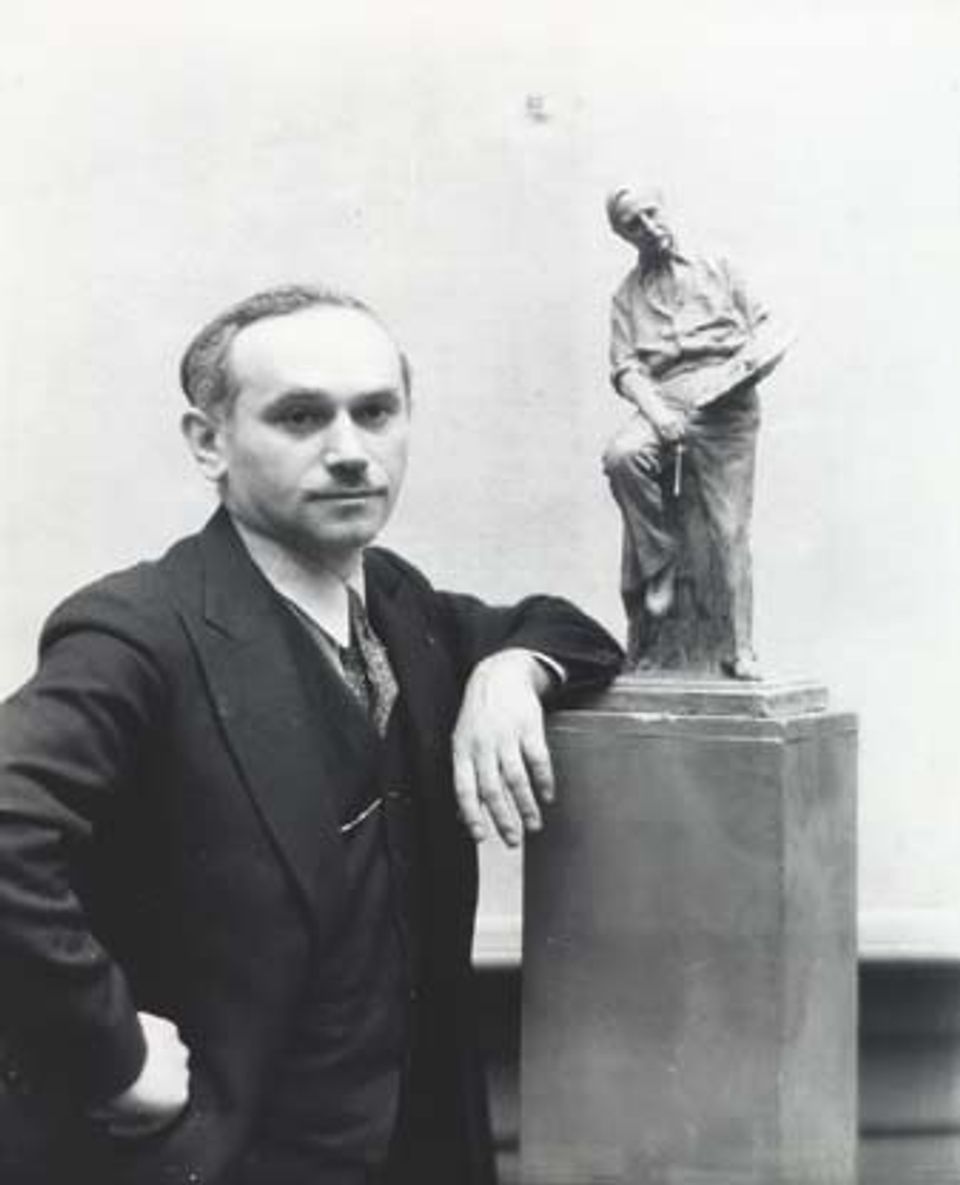Max Kalish

- Also known as
- Max Kalichik
- Born
- Valozin, Lithuania
- Active in
- Great Neck, New York, United States
- Biography
In 1893, when Max Kalish was two years old, his Orthodox Jewish family emigrated from Lithuania to Cleveland, Ohio. At age fifteen he started taking classes at the Cleveland School of Art, where he studied sculpture with Herman Matzen and graduated in 1910. He then spent a year and a half in New York City, studying with Herbert Adams at the National Academy of Design and in the studios of A. Stirling Calder, Isidore Konti, and Cartaino Pietro. In 1912 he went to Paris, where he worked first under Paul Wayland Bartlett at the Académie Colorossi and then under Jean-Antoine Injalbert at the École des Beaux-Arts.
Returning to America, he was employed to enlarge the architectural decorations for the Panama-Pacific International Exposition in San Francisco in 1915. Joining the Army Medical Corps in 1916, he helped design prosthetics for wounded soldiers and at the same time modeled a series of one-third life-size portrait figures of soldiers and officers. Beginning in 1920 and for the next twelve years, he divided his time between Paris and Cleveland. From 1920 to 1937, Kalish created about sixty one-third life-size figures of American laborers, for which he earned recognition. In 1932 he moved to New York City and maintained a studio there for the rest of his life. In 1933–34 he modeled a series of twenty-two portrait statuettes of prominent New Yorkers and another series of forty-eight figures entitled "The Living Hall of Washington, 1944."
National Museum of American Art (CD-ROM) (New York and Washington D.C.: MacMillan Digital in cooperation with the National Museum of American Art, 1996)













